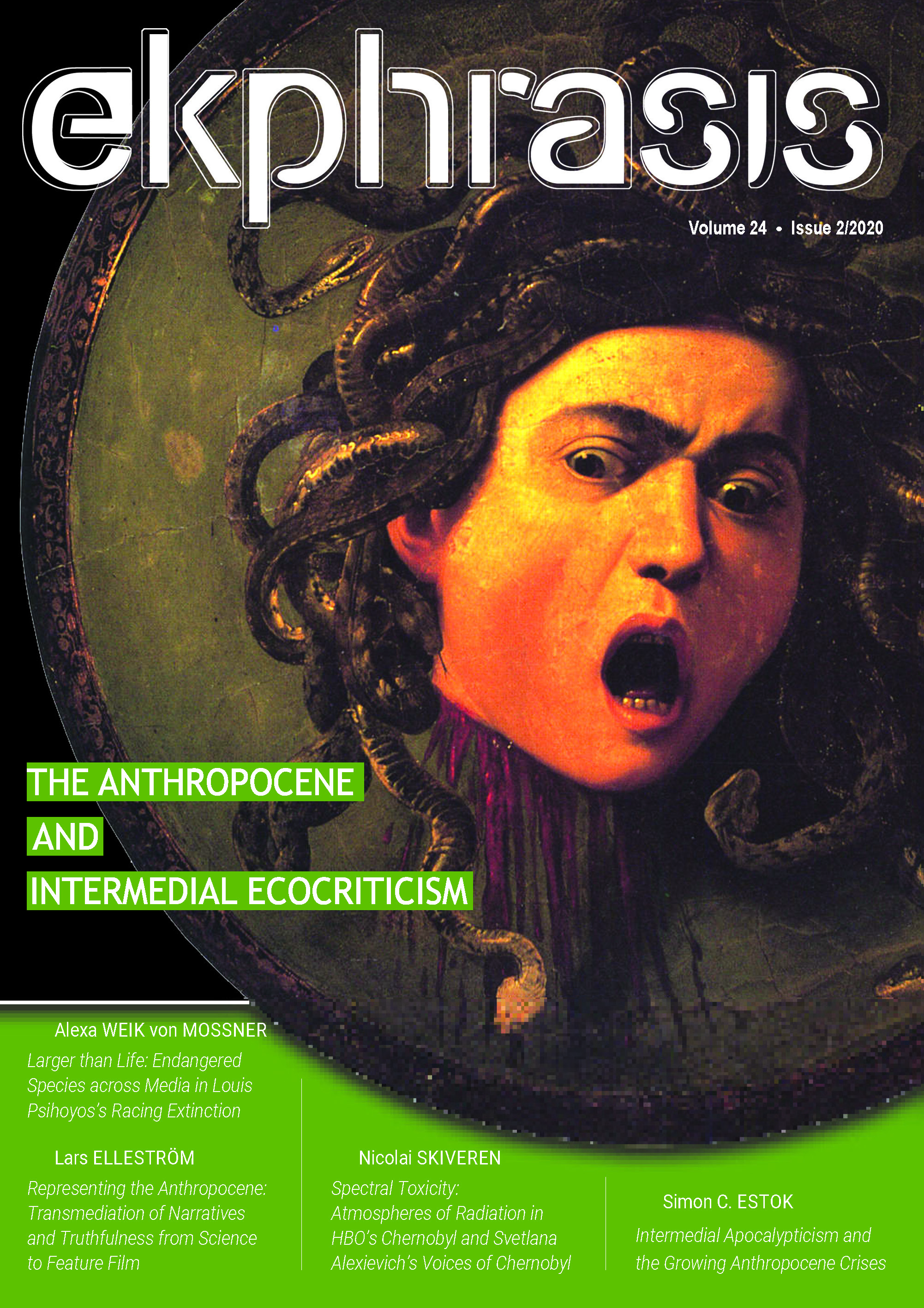Spectral Toxicity: Atmospheres of Radiation in HBO’s Chernobyl and Svetlana Alexievich’s Voices of Chernobyl
Spectral Toxicity: Atmospheres of Radiation in HBO’s Chernobyl and Svetlana Alexievich’s Voices of Chernobyl
Author(s): Nicolai SkiverenSubject(s): Language and Literature Studies, Fine Arts / Performing Arts, Media studies, Studies of Literature, Communication studies, Comparative Study of Literature, Film / Cinema / Cinematography
Published by: Universitatea Babeş-Bolyai, Facultatea de Teatru si Televiziune
Keywords: Chernobyl; Voices of Chernobyl; Svetlana Alexievich; ecocriticism; intermediality; ecomedia; spectral toxicity; atmosphere; affect; trans-corporeality; eco-horror;
Summary/Abstract: This article presents a comparative analysis of HBO’s mini-series Chernobyl (2019) and Svetlana Alexievich’s literary testimonies Voices of Chernobyl: The Oral History of a Nuclear Disaster (1997) – both of which represent the events and the aftermath of the Chernobyl nuclear accident in 1986. As a case study in intermedial ecocriticism, the comparative study investigates the ability of each media product to make perceptible the forces of radiation, focusing in particular on what it feels like to inhabit the atmospheres of contamination that the two media products invite their viewers and readers to enter. The article proposes the neologism ‘spectral toxicity’ as a means to describe these atmospheres in which the presence of a threatening nonhuman force feels immanent and impending while also remaining imperceptible. Methodologically, the article is situated in the intersection of ecocriticism and intermedial studies, as it seeks to elucidate the phenomenologically distinct ways in which Voices of Chernobyl, as a literary work, and Chernobyl, as an audio-visual work, employ different aesthetic strategies to represent radiation and to mobilize affective experiences. The article argues that both works employ a type of indexical aesthetics, but that the choice of index differs depending on the modality of the media product. Whereas the mini-series constructs a rich soundscape and striking images of bodily decay, Voices of Chernobyl provides a polyphony of first person testimonies about the dehumanizing experience of radiation exposure. By comparing the two media products in terms of the experiences they create, the study illustrates the varying affordances of literary and audio-visual media for representing the phenomenon of radiation and the consequences of nuclear disaster.
Journal: Ekphrasis. Images, Cinema, Theory, Media
- Issue Year: 24/2020
- Issue No: 2
- Page Range: 72-96
- Page Count: 25
- Language: English

